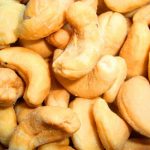
-
Komodo dragon
Native of Komodo, Flores, it is a protected species and the largest living lizard. It is also a fierce predator; the toxins in its saliva cause their victims to go into shock and prevent their blood from clotting.
Dragon de Komodo
Originaire de Komodo, Flores, c’est une espèce protégée et le plus grand lézard vivant. C’est aussi un prédateur impitoyable. Les toxines contenues dans sa salive mettent leur victimes en état de choc et agissent comme anticoagulant.

2. Sumatran Tiger
With less than 500 tigers living in their habitat, the Panthera tigris sumatera is a critically endangered species that risks extinction. The main threats are poaching and habitat loss, mainly due to human expansion and deforestation.
Tigre de Sumatra
Moins que 500 exemplaires de Panthera tigris sumatera vivent dans leur habitat original. A cause de menaces telles que le braconnage, la perte d’habitat due et la déforestation, cet espèce de tigre est en danger critique et risque l’extinction.

3. Javan Rhino
Probably the rarest mammal in the world, the Rhinoceros sondaicus is a critically endangered species, with only one population left living in Ujung Kulon National Park in Java. This large mammal can eat up to 50kg of food per day.
Rhinoceros de Java
Le Rhinoceros sondaicus est en danger critique et probablement le mammifère le plus rare au monde, avec une seule population vivant dans le parc national Ujung Kulon. Cet énorme mammifère peut manger jusqu’à 50 kg de nourriture par jour.

5. Sumatran Orangutan
Literally meaning “person (orang) from the forest (hutan)”, orangutans are very smart creatures who have a very developed sense of parental care. In risk of extinction, the last populations in the wild live in the protected areas of Sumatra and Kalimantan.
Orang-outan de Sumatra
Signifiant littéralement « Personne (orang) de la foret (hutan) », les orang-outans sont des créatures très intelligentes qui montrent des soins parentaux très développés. A risque d’extinction, les dernières population en liberté vivent dans les zones protégées de Sumatra et Kalimantan.

6. Indonesian coelacanth
Considered a “living fossil”, the L. menadoensis belongs a rare order of fish that was believed to be extinct and re-discovered in North Sulawesi in 1997. There are only two species of this order of fish, which is the most threatened in the world.
Cœlacanthe indonésien
Le L. menadoensis fait partie d’un ordre de poissons qui ne compte que deux espèces et est le plus menacée au monde. Cette espèce était considérée disparue et fut re-découverte en Sulawesi du Nord en 1997.

6. Wilson’s bird of Paradise
Distributed in West Papua, this cute bird displays strong sexual dimorphism. The male is red and black, with a bright blue head and a yellow neck, while the female has brownish body and a pale blue head.
Paradisier républicain
Distribué en Papua Occidentale, cet joli oiseau affiche un dimorphisme sexuel très marqué. Le mâle est rouge et noir, la tête est bleu brillant et le cou est jaune. La femelle a un corps marron et la tête bleu clair.

